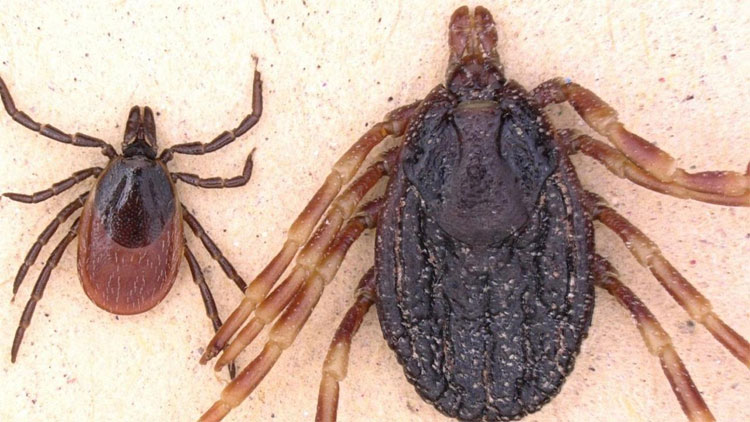Detection of dangerous tropical parasites in Germany
Scientists have discovered a giant mite in Germany and are concerned that they will transmit the deadly tropical disease of Crimean-Congo hemorrhage throughout Europe.
Scientists in Germany have discovered a tropical mite that can grow up to 2cm in length - 10 times larger than regular mites.

This tick has the ability to transmit Crimean-Congo dengue fever (CCHF).
This mite, whose scientific name is Hyalomma marginatum, is capable of spreading the disease . Symptoms of CCHF include fever, muscle pain, headache, vomiting, diarrhea, and bleeding under the skin. A quarter of people infected with Crimean-Congo dengue fever will die.
Researchers believe that unusually hot and humid weather in Germany is the reason why the ticks appear here because they prefer lower humidity than mites often found in the country. They may have arrived here according to migratory birds. All ticks are found in farm animals, mainly horses.
This year, scientists have discovered seven tropical ticks - previously only two examples of tropical ticks in Germany, one in 2015 and another in 2017.
Scientists are concerned that as warm temperatures continue to become more common in Germany, France and the UK, this mite may remain there and spread throughout Europe forever.
Parasite researcher Ute Mackenstedt from Stuttgart's Hohenheim University said: "We think we have to take into account that more and more tropical ticks found in Germany can live here. because of the ideal weather conditions ".

Symptoms of CCHF include fever, muscle pain, headache, vomiting, diarrhea and bleeding under the skin.
Dr. Lidia Chitimia-Dobler, tick expert at the University of Hohenheim and the Institute of Microbiology (IMB) of the Federal Republic of Germany Armed Forces in Munich, said: "We can definitely identify the year. Of the seven ticks, there are four specimens of the Hyalomma marginatum , and one specimen of the Hyalomma rufipes, and we did not expect it to appear in Germany at this time. "
Dr. Gerhard Dobler, physicist and microbiologist at IMB, added: "In a specimen found, we can detect the pathogen of a tick-like typhus . "
- 4 types of parasites that are extremely dangerous to eat meat
- What happens if all the parasites on Earth disappear?
- Korea: Detection of eggs in mummy liver 375 years old
- The more parasites live longer
- Alarm on 'new HIV' in America
- How dangerous is the carnivorous parasite caused by IS
- Bill Gates: 'This is the most dangerous transformation monster on the planet'
- The dangerous 'carnivorous' parasite has returned and is more beneficial than before
- 4 the opposite in Germany but few people know
- Smell faster, more accurately
- These parasites are capable of transgender and controlling other species
- Scientists raise parasites in the body
 Why do potatoes have eyes?
Why do potatoes have eyes? 'Tragedy' the world's largest carnivorous life: Death becomes ... public toilet
'Tragedy' the world's largest carnivorous life: Death becomes ... public toilet Tomatoes were once considered 'poisonous' for 200 years
Tomatoes were once considered 'poisonous' for 200 years Detecting microscopic parasites on human face
Detecting microscopic parasites on human face